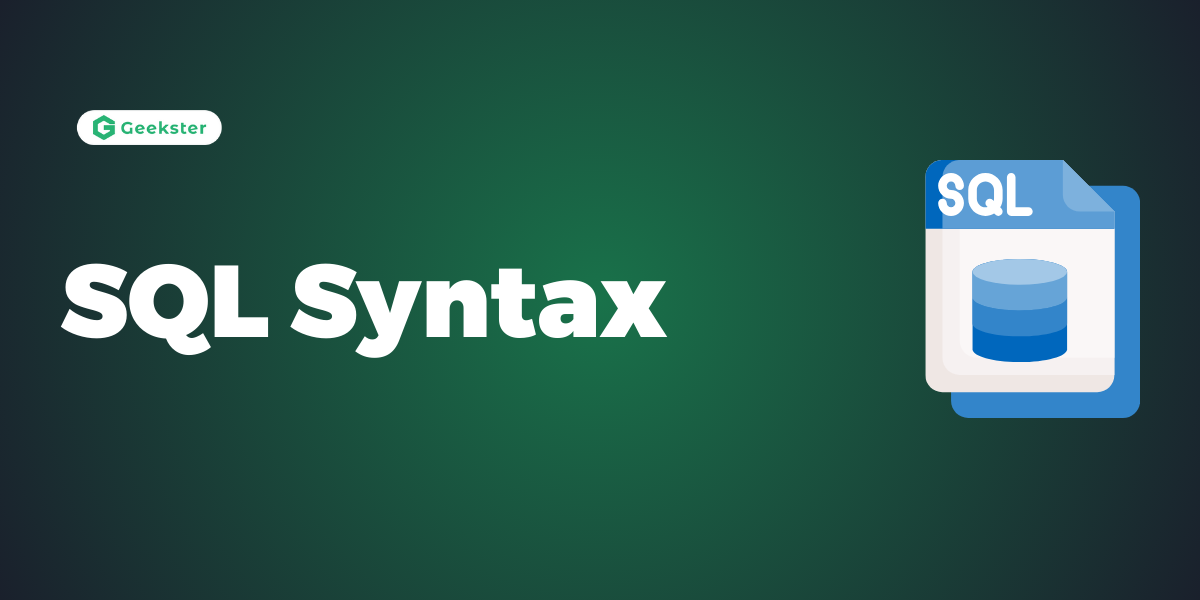When you want to do some operations on the data in the database, you must write the query in the predefined syntax of SQL.
The syntax of the structured query language is a unique set of rules and guidelines, which is not case-sensitive. Its Syntax is defined and maintained by the ISO and ANSI standards.
SQL syntax is a unique set of rules and guidelines for writing SQL statements. This tutorial gives you a quick start with SQL by listing all the basic SQL Syntax.
All the SQL statements start with any of the keywords like SELECT, INSERT, UPDATE, DELETE, ALTER, DROP, CREATE, USE, SHOW, and all the statements end with a semicolon (;).
Following are some most important points about SQL syntax which are to remember
- You can write the keywords of SQL in both uppercase and lowercase, but writing the SQL keywords in uppercase improves the readability of the SQL query.
- SQL statements or syntax are dependent on text lines. We can place a single SQL statement on one or multiple text lines.
- You can perform most of the action in a database with SQL statements.
- SQL syntax depends on relational algebra and tuple relational calculus.
SQL Statement
SQL statements tell the database what operation you want to perform on the structured data and what information you would like to access from the database.
The statements of SQL are very simple and easy to use and understand. They are like plain English but with a particular syntax.
Syntax
SELECT "column_name" FROM "table_name"; Each SQL statement begins with any of the SQL keywords and ends with the semicolon (;). The semicolon is used in the SQL for separating the multiple SQL statements that are going to execute in the same call.
Most Important SQL Commands and Statements
- Select Statement
- Update Statement
- Delete Statement
- Create Table Statement
- Alter Table Statement
- Drop-Table Statement
- Create Database Statement
- Drop Database Statement
- Insert Into Statement
- Truncate Table Statement
- Describe Statement
- Distinct Clause
- Commit Statement
- Rollback Statement
- Create Index Statement
- Drop Index Statement
- Use Statement
Conclusion
In conclusion, SQL syntax forms the foundation for interacting with relational databases, allowing users to manage, manipulate, and query data effectively. Understanding SQL syntax is crucial for anyone working with databases, as it enables the creation, modification, and retrieval of data in a structured and efficient manner. By mastering SQL syntax, users can perform a wide range of tasks, from basic data retrieval to complex data analysis and manipulation. With its clear and standardized syntax, SQL provides a powerful and versatile tool for database management across various platforms and environments.
Frequently asked questions
SQL syntax refers to the rules and structures that define how SQL statements are written to interact with databases. It includes commands for querying, inserting, updating, and deleting data, as well as defining and modifying database structures.
The basic SQL commands include SELECT (for querying data), INSERT (for adding new records), UPDATE (for modifying existing records), DELETE (for removing records), and CREATE TABLE (for creating new tables).
To write a SELECT statement, specify the columns you want to retrieve data from and the table(s) you want to query. Optionally, you can include conditions using the WHERE clause to filter the results.
INNER JOIN returns only the rows where there is a match in both tables. LEFT JOIN returns all rows from the left table and the matched rows from the right table. RIGHT JOIN returns all rows from the right table and the matched rows from the left table.
To create a new table, use the CREATE TABLE statement followed by the table name and the list of columns along with their data types.

